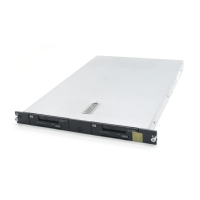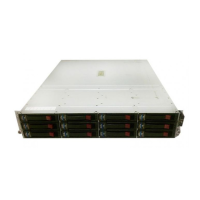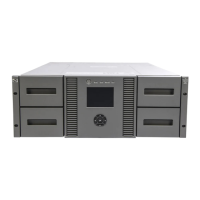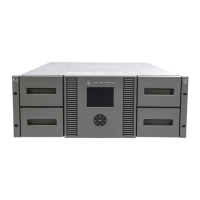C Using Veritas Cluster Server to prevent
data corruption
Using VCS I/O fencing
By issuing a Persistent Reserve SCSI-3 command, VCS employs an I/O fencing feature that prevents
data corruption from occurring if cluster communication stops. To accomplish I/O fencing, each node
of VCS registers reserve keys for each disk in a disk group that is imported. The reserve key consists
of a unique value for each disk group and a value to distinguish nodes. When importing a disk group,
each node in a VCS cluster registers the reserve key for all paths of all disks (LUs) in the disk group,
but only 1 node will succeed in reserving the disk group. Example reserve keys for Port 1A are shown
in Table 16 on page 47 and example reserve keys for Port 2A are shown in Table 17 on page 47.
The format of the reserve key is:
node number + disk group-unique information
When the Persistent Reserve command is received by the disk array, the reserve key and Port WWN
of node are registered in the key registration table for each port of the disk array. To avoid duplicate
registrations, the disk array checks the node Port WWN and reserve key and only adds an entry in
its table if the WWN/reserve key combination do not already exist in the table for the port which
received the registration request. Duplicate entries can exist across different ports.
The maximum number of reserve keys that can be registered per port for each disk array is 128.
Attempts to add additional registration keys will fail if the number exceeds this limit. Because of this,
try to limit the number of:
• Nodes
• Paths to each array port
• Disk groups
For example, when adding an LU to increase disk capacity, do not create a new disk group. Instead,
add the LU to one of the existing disk groups (see Figure 4 on page 46).
For each array port, calculate the number of VCS registration keys needed as follows:
number of WWNs visible to a P9000 port x number of disk groups = number of registration
keys
Where the number of WWNs visible to a P9000 port = number of hosts x number of WWNs
per P9000 port.
In Figure 4 on page 46, the number of WWNs visible to either port (1A or 2A) is four (WWNa0
and WWNb0 for port 1A and WWNa1 and WWNb1 for port 2A). Therefore, the number of
registration keys will be equal to 4.
P9000 Configuration Guide: IBM AIX 45

